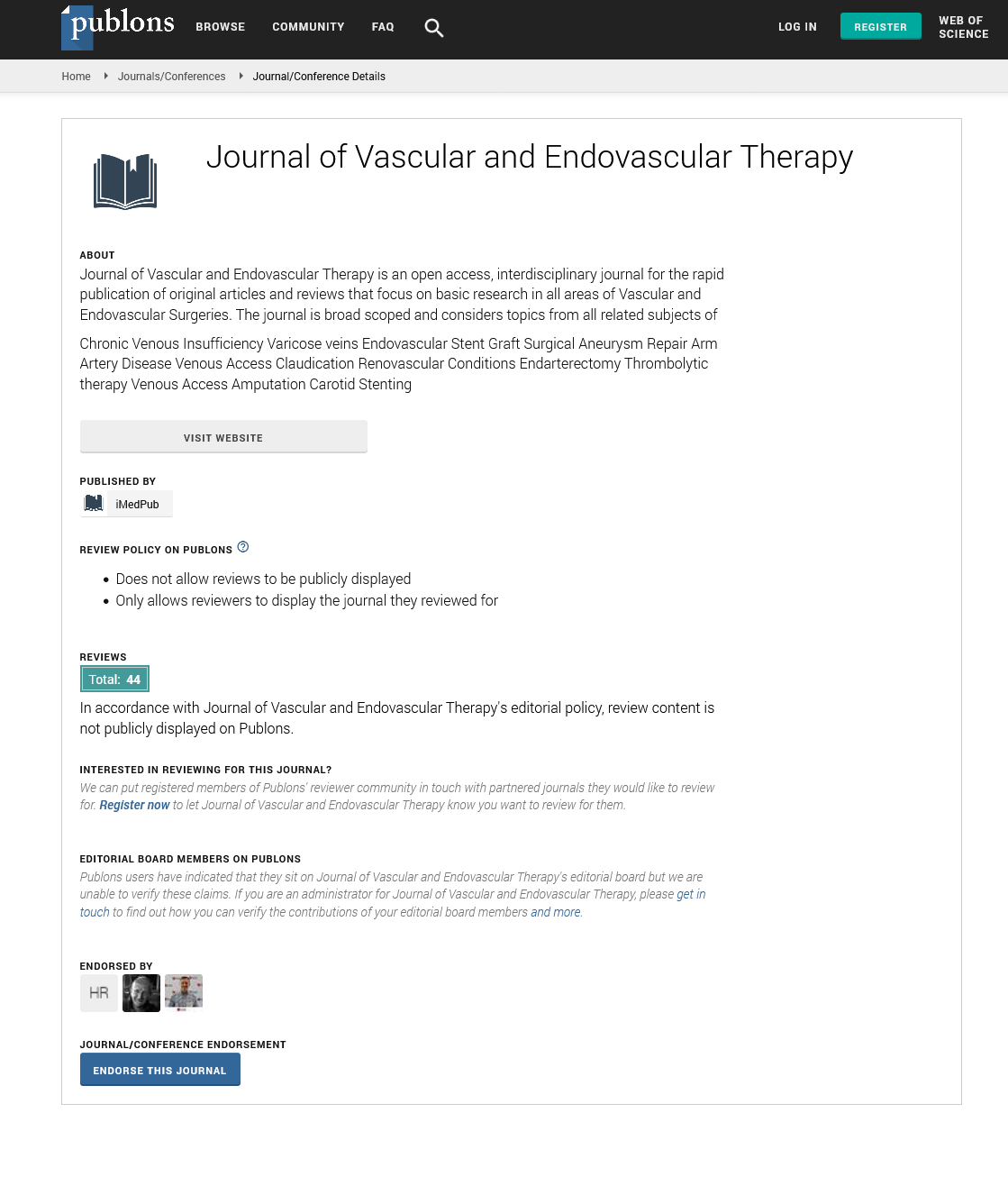Novel pilot films providing indispensable information in pharmaco-cavernosography
3rd Edition of World Congress & Exhibition on Vascular Surgery
May 24-25, 2018 London, UK
Chi Can Huynh and Geng Long Hsu
The Male Clinic, Australia Hsu′s Andrology, Taiwan National Taiwan University, Taiwan
ScientificTracks Abstracts: J Vasc Endovasc Therapy
DOI: 10.21767/2573-4482-C1-002
Abstract
Conventional pharmaco-cavernosography including CTcavernosography provides little information on penile venous anatomy, although it is acceptable in documenting venoocclusive erectile dysfunction (ED). We report an innovative method, which can exclusively provide penile venous anatomy for guiding penile venous stripping. From July 2010 to November 2017, 896 impotent men, aged 20 to 75 years, underwent this method of pharmaco-cavernosography in which two sets of 60mL of 50% omnipaque solution were administered intracavernously. The first set of pilot cavernosograms was taken at intervals of five, ten, twenty and thirty seconds after the commencement of the injection. The second set of cavernosograms was taken in the same intervals within 30 minutes following the pilot set, preceded by the injection of 20 µg prostaglandin E1 (PGE1). For comparison, the pilot cavernosograms were routinely performed immediately postoperative on the patient undergoing penile venous stripping. An analysis was conducted on the drainage veins including deep dorsal vein (DDV), cavernosal veins (CVs) and para-arterial veins (PAVs) accordingly. The veins demonstrated in the pilot cavernosograms, and the second set was compared in terms of venous numbers and presentation percentage. A radio-opacity of the penile crura and that of the femoral cortex was made. There was a statistically significant difference (P<0.001) between the total number of independent venous drainage channels and the presentation percentage of DDV, CVs and PAVs observed in the pilot cavernosograms, and those in second set (4.5 vs. 2.1; 97.48%, 60.35%, and 38.93% vs. 57.08%, 29.37%, and 19.07%, respectively). A stronger radioopacity of the penile crura is unexceptional noted. Compared with conventional pharmaco-cavernosography methods, pilot cavernosograms are readily able to show detailed penile venous anatomy which is indispensable for guiding venous stripping surgery. It is, therefore, may be concluded that pilot cavernosograms are an exclusively valuable addition to conventional of pharmaco-cavernosography and CT-c protocols avernosography.
Recent Publications 1. Hsu G L, Chen H S, Hsieh C H, Lee W Y, Chen K L and Chang C H (2010) Clinical experience of a refined penile venous stripping surgery procedure for patients with erectile dysfunction: is it a viable option? Journal of Andrology 31:271-280. 2. Hsu G L, Chen H S, Hsieh C H, Lee W Y, Chen K L and Chang C H (2010) Salvaging penile venous stripping surgery. Journal of Andrology 31:250-260. 3. Hsieh C H, Liu S P, Hsu G L, Chen H S, Molodysky E, Chen Y H and Yu H J (2012) Advances in our understanding of mammalian penile evolution, human penile anatomy and human erection physiology: clinical implications for physicians and surgeons. Medical Science Monitor 18:RA118-125. 4. Hsu G L, Hung Y P, Tsai M H, Hsieh C H, Chen H S, Molodysky E, Huynh C C and Yu H J (2012) Penile veins are the principal component in erectile rigidity: a study of penile venous stripping on defrosted human cadavers. Journal of Andrology 33:1176-1185
Biography
Chi Can Huynh graduated from Sydney University in 1999. During his senior years in Medical School he completed a Surgical Research Term with Tom DeMeester at the University of Southern California. He was accepted into
the Advanced General Surgical training scheme in 2003 and then onto the Advanced Urology Training Program in 2005. He was the inaugural Robotic Fellow at St. Vincent’s Prostate Cancer Centre in 2008. Following this, he spent 18 months in Manchester (United Kingdom) completing a laparoscopic prostate fellowship. He has interests in erectile restorative surgery and robotic prostate surgery and was the first in Australia to perform a robotic assisted radical nephro-ureterectomy and penile erection restorative vein surgery. His research interests are in erectile dysfunction and he is a part time fellow in erectile restorative surgery overseas. He co-authored papers in peer reviewed medical journals and presented multiple international conferences on the topic. He also holds teaching positions with the Rural Medical School of the Australian National University and the Australian School of Advanced Medicine.
Email:urocch@gmail.com
Email:genglonghsu@gmail.com
Google Scholar citation report
Citations : 177
Journal of Vascular and Endovascular Therapy received 177 citations as per Google Scholar report
Journal of Vascular and Endovascular Therapy peer review process verified at publons
Abstracted/Indexed in
- Google Scholar
- Publons
- Geneva Foundation for Medical Education and Research
- Secret Search Engine Labs
Open Access Journals
- Aquaculture & Veterinary Science
- Chemistry & Chemical Sciences
- Clinical Sciences
- Engineering
- General Science
- Genetics & Molecular Biology
- Health Care & Nursing
- Immunology & Microbiology
- Materials Science
- Mathematics & Physics
- Medical Sciences
- Neurology & Psychiatry
- Oncology & Cancer Science
- Pharmaceutical Sciences


